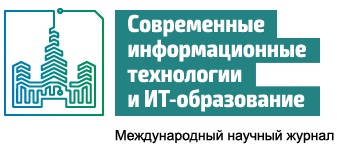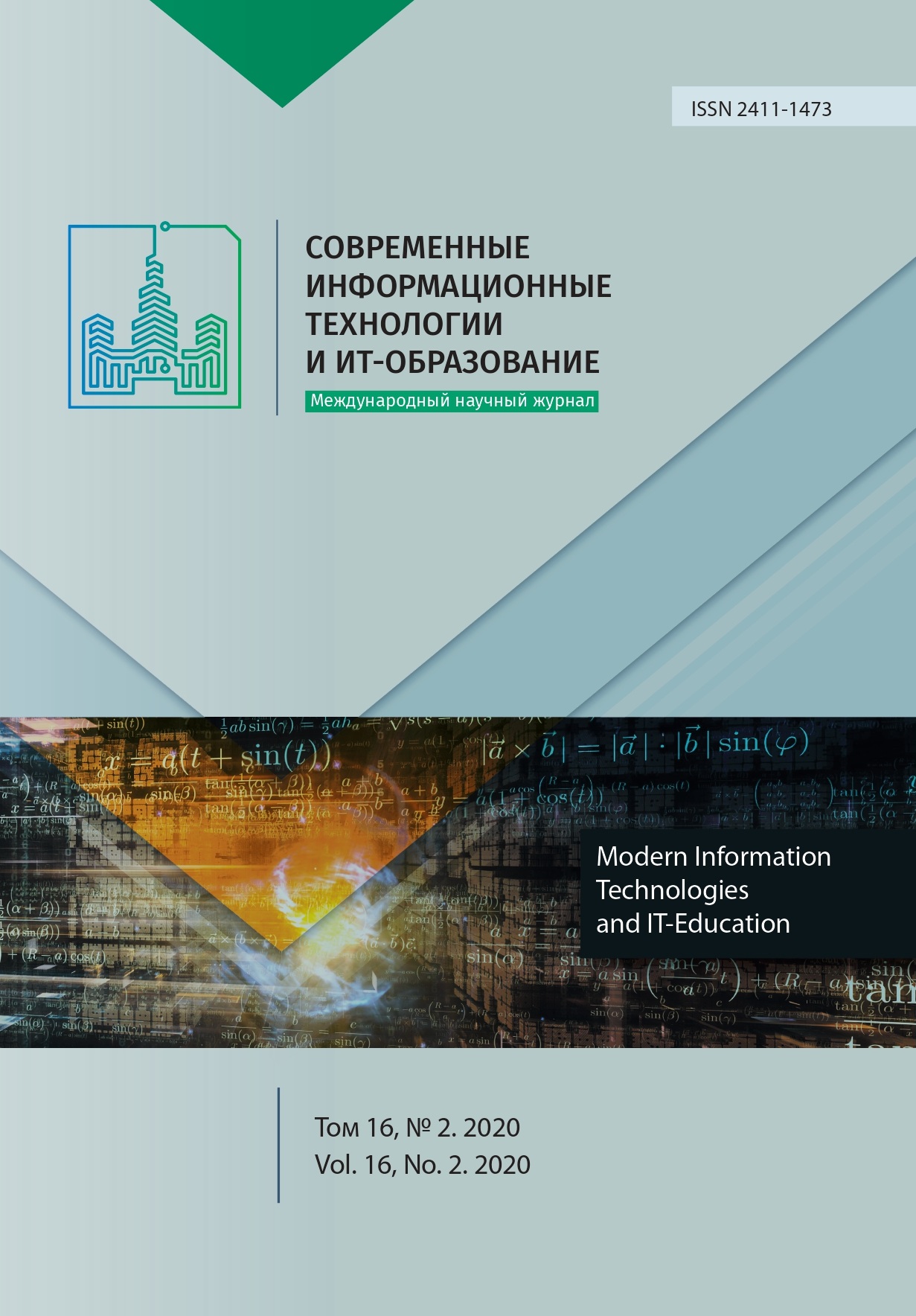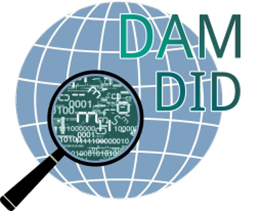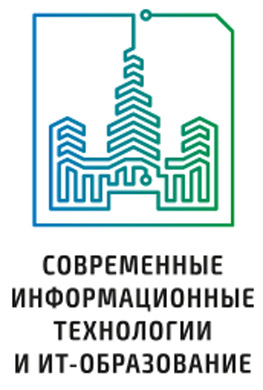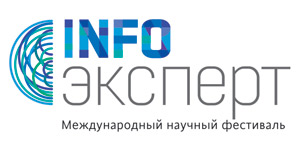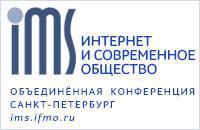Инструменты визуального моделирования для реализации проблемно-ориентированного подхода для обучения программированию старших школьников
Аннотация
Целью работы является разработка методики обучения школьников старших классов информатике, а именно алгоритмизации и программированию, с применением проблемно-ориентированного подхода и внедрением инструментов визуального моделирования.
Проблемно-ориентированный подход способствует преодолению роли ученика как пассивного слушателя, способствует вовлечению ученика в активных процесс продуцирования знаний. В статье рассмотрены преимущества этого подхода, выделен класс проблемных задач и представлена их типизация с разделением уровней трудности и проблемности заданий. Также выявлены методические трудности при внедрении проблемных задач в процесс обучения. Для их преодоления предлагаются инструменты визуального моделирования и методика обучения алгоритмизации и программированию с их применением.
Инструменты визуального моделирования - это тип программного обеспечения, которое позволяет создавать визуальные абстракции, которые воспроизводят концепции и объекты реального мира с их взаимосвязями, что может помочь в решении проблемы. Сформированные умения работы с такими инструментами позволят студентам самостоятельно представлять, представлять и выражать свои знания. Кроме того, эти инструменты позволяют структурировать процесс решения проблемы, оптимизируя время решения каждого этапа решения проблемной задачи.
Рассмотрены различные инструменты визуального моделирования: интеллектуальные карты, концептуальные карты, карты аргументаций, деревья решений, причинные модели, план-график выполнения, диаграммы процессов, а также использование более простых для школьников преформальных моделей, основанных на интеллектуальных и концептуальных картах. Приводятся возможности их применения на различных этапах решения проблемных заданий. В качестве примера рассматриваются MS Visio и Coggle.
В статье представлены результаты сравнения результатов обучения контрольной и экспериментальной групп, которые показывают, что предлагаемые инструменты визуального моделирования для решения проблемных задач в области алгоритмизации и программирования повышают эффективность обучения школьников.
Литература
[2] Özdemir S. Soloborative Learning: Solo Thinking, Collaborative Tinkering. International Electronic Journal of Elementary Education. 2019; 11(3):217-219. (In Eng.) DOI: https://doi.org/10.26822/iejee.2019349246
[3] Koznov D.V. Osnovy vizual'nogo modelirovanija [Basis of Visual Modeling]. M.: Intuit.Ru Publ., BINOM Laboratory of Knowledge; 2008. (In Russ.)
[4] Jonassen D.H. Toward a design theory of problem solving. Educational Technology Research and Development. 2000; 48(4):63-85. (In Eng.) DOI: https://doi.org/10.1007/BF02300500
[5] Jonassen D.H. Instructional design models for well-structured and III-structured problem-solving learning outcomes. Educational Technology Research and Development. 1997; 45(1):65-94. (In Eng.) DOI: https://doi.org/10.1007/BF02299613
[6] De Corte E., Verschaffel L., Masui C. The CLIA-model: A framework for designing powerful learning environments for thinking and problem solving. European Journal of Psychology of Education. 2004; 19(4):365-384. (In Eng.) DOI: https://doi.org/10.1007/BF03173216
[7] Brilingaite A., Bukauskas L., Juškeviciene A. Competency Assessment in Problem-Based Learning Projects of Information Technologies Students. Informatics in Education. 2018; 17(1):21-44. (In Eng.) DOI: https://doi.org/10.15388/infedu.2018.02
[8] Robins A., Rountree J., Rountree N. Learning and Teaching Programming: A Review and Discussion. Computer Science Education. 2003; 13(2):137-172. (In Eng.) DOI: http://dx.doi.org/10.1076/csed.13.2.137.14200
[9] Kwon K., Cheon J. Exploring Problem Decomposition and Program Development through Block-Based Programs. International Journal of Computer Science Education in Schools. 2019; 3(1):1-14. (In Eng.) DOI: https://doi.org/10.21585/ijcses.v3i1.54
[10] Donley K.S. Coding in the Curriculum: Learning Computational Practices and Concepts, Creative Problem Solving Skills, and Academic Content in Ten to Fourteen-Year-Old Children: diss. ... Ph.D. (Philosophy). ProQuest Number: 10842428. Temple University, USA; 2018. (In Eng.)
[11] Çoklar A.N., Akçay A. Evaluating programming self-efficacy in the context of inquiry skills and problem-solving skills: A perspective from teacher education. World Journal on Educational Technology: Current Issues. 2018; 10(3):153-164. Available at: https://files.eric.ed.gov/fulltext/EJ1185367.pdf (accessed 20.04.2020). (In Eng.)
[12] Yusri. The Effects of Problem Solving, Project-Based Learning, Linguistic Intelligence and Critical Thinking on the Students'Report Writing. Advances in Language and Literary Studies. 2018; 9(6):21-26. (In Eng.) DOI: http://dx.doi.org/10.7575/aiac.alls.v.9n.6p.21
[13] Sawyer R., Rowe J., Azevedo R., Lester J. Filtered Time Series Analyses of Student Problem-Solving Behaviors in Game-Based Learning. In: Proceedings of the 11th International Conference on Educational Data Mining. 2018. p. 229-238. Available at: https://files.eric.ed.gov/fulltext/ED593118.pdf (accessed 20.04.2020). (In Eng.)
[14] de Jong T. Cognitive load theory, educational research, and instructional design: some food for thought. Instructional Science. 2010; 38(2):105-134. (In Eng.) DOI: https://doi.org/10.1007/s11251-009-9110-0
[15] Huttel H., Gnaur D. If PBL is the answer, then what is the problem? Journal of Problem Based Learning in Higher Education. 2017; 5(2):1-21. (In Eng.) DOI: https://doi.org/10.5278/ojs.jpblhe.v5i2.1491
[16] Michailova N.V. Methodological Pragmatism of the Problem-Oriented Training in Mathematics. Mathematical Structures and Modeling. 2018; (1):30-36. (In Russ., abstract in Eng.) DOI: http://dx.doi.org/10.25513/2222-8772.2018.1.30-36
[17] Kwon K. Novice Programmer's Misconception of Programming Reflected on Problem-Solving Plans. International Journal of Computer Science Education in Schools. 2017; 1(4):1-12. (In Eng.) DOI: https://doi.org/10.21585/ijcses.v1i4.19
[18] Abushkin H.K., Kharitonova A.A., Khvastunov N.N., Gorshunov M.V. Problem-based learning in secondary school: Status and prospects. Cypriot Journal of Educational Sciences. 2018; 13(4):444-450. (In Eng.) DOI: https://doi.org/10.18844/cjes.v13i4.3896
[19] Wang M., Wu B., Kirschner P.A., Spector J.M. Using cognitive mapping to foster deeper learning with complex problems in a computer-based environment. Computers in Human Behavior. 2018; 87:450-458. (In Eng.) DOI: https://doi.org/10.1016/j.chb.2018.01.024
[20] Kim N.J., Belland B.R., Walker A.E. Effectiveness of Computer-Based Scaffolding in the Context of Problem-Based Learning for Stem Education: Bayesian Meta-analysis. Educational Psychology Review. 2018; 30(2):397-429. (In Eng.) DOI: https://doi.org/10.1007/s10648-017-9419-1
[21] Hendriana H., Johanto T., Sumarmo U. The Role of Problem Based Learning to Improve Students'Mathematical Problem-Solving Ability and Self Confidence. Journal on Mathematics Education. 2018; 9(2):291-300. Available at: https://files.eric.ed.gov/fulltext/EJ1194294.pdf (accessed 20.04.2020). (In Eng.)
[22] Unal E., Çakir H. Students'Views about the Problem Based Collaborative Learning Environment Supported by Dynamic Web Technologies. Malaysian Online Journal of Educational Technology. 2017; 5(2):1-19. Available at: https://files.eric.ed.gov/fulltext/EJ1142387.pdf (accessed 20.04.2020). (In Eng.)
[23] Makhmutov M.I. Organizacija problemnogo obuchenija v shkole [Organization of problem-based learning in school]. M.: Education; 1977. (In Russ.)
[24] Matyushkin A.M., Ponukalin A.A. Problematic situations in the psychological preparation of a specialist at a university. Voprosy Psychologii. 1988; (2):76-82. Available at: https://www.elibrary.ru/item.asp?id=41282418 (accessed 20.04.2020). (In Russ., abstract in Eng.)
[25] Getzels J.W., Csikszentmihalyi M. The creative vision: A longitudinal study of problem finding in art. New York, NY: John Wiley & Sons; 1976. (In Eng.)
[26] Sak U., Maker C. Divergence and Convergence of Mental Forces of Children in Open and Closed Mathematical Problems. International Education Journal. 2005; 6(2):252-260. Available at: https://files.eric.ed.gov/fulltext/EJ854978.pdf (accessed 20.04.2020). (In Eng.)
[27] Kudryavtsev D.V., Kostousov S.A. Application of Knowledge Tools in Training, Based on Problems'Solving: Methodology and it Support. Open Education. 2017; 21(3):57-65. (In Russ., abstract in Eng.) DOI: https://doi.org/10.21686/1818-4243-2017-3-57-65
[28] Kostousov S., Kudryavtsev D. Towards a Framework of Using Knowledge Tools for Teaching by Solving Problems in Technology-Enhanced Learning Environment. In: Sampson D.G., Spector J.M., Ifenthaler D., Isaías P. (ed.) Proceedings of the 14th International Conference on Cognition and Exploratory Learning in the Digital Age (CELDA 2017). Vilamoura, Algarve, Portugal; 2017. p. 246-250. Available at: https://files.eric.ed.gov/fulltext/ED579395.pdf (accessed 20.04.2020). (In Eng.)
[29] Kostousov S., Simonova I. Visual modeling for exploratory problem solving on computer science lessons. In: Proceedings of the 16th International Conference on Cognition and Exploratory Learning in Digital Age (CELDA 2019). Cagliari, Italy; 2019. p. 265-272. (In Eng.) DOI: https://doi.org/10.33965/celda2019_201911L033

Это произведение доступно по лицензии Creative Commons «Attribution» («Атрибуция») 4.0 Всемирная.
Редакционная политика журнала основывается на традиционных этических принципах российской научной периодики и строится с учетом этических норм работы редакторов и издателей, закрепленных в Кодексе поведения и руководящих принципах наилучшей практики для редактора журнала (Code of Conduct and Best Practice Guidelines for Journal Editors) и Кодексе поведения для издателя журнала (Code of Conduct for Journal Publishers), разработанных Комитетом по публикационной этике - Committee on Publication Ethics (COPE). В процессе издательской деятельности редколлегия журнала руководствуется международными правилами охраны авторского права, нормами действующего законодательства РФ, международными издательскими стандартами и обязательной ссылке на первоисточник.
Журнал позволяет авторам сохранять авторское право без ограничений. Журнал позволяет авторам сохранить права на публикацию без ограничений.
Издательская политика в области авторского права и архивирования определяются «зеленым цветом» в базе данных SHERPA/RoMEO.
Все статьи распространяются на условиях лицензии Creative Commons «Attribution» («Атрибуция») 4.0 Всемирная, которая позволяет другим использовать, распространять, дополнять эту работу с обязательной ссылкой на оригинальную работу и публикацию в этом журналe.
